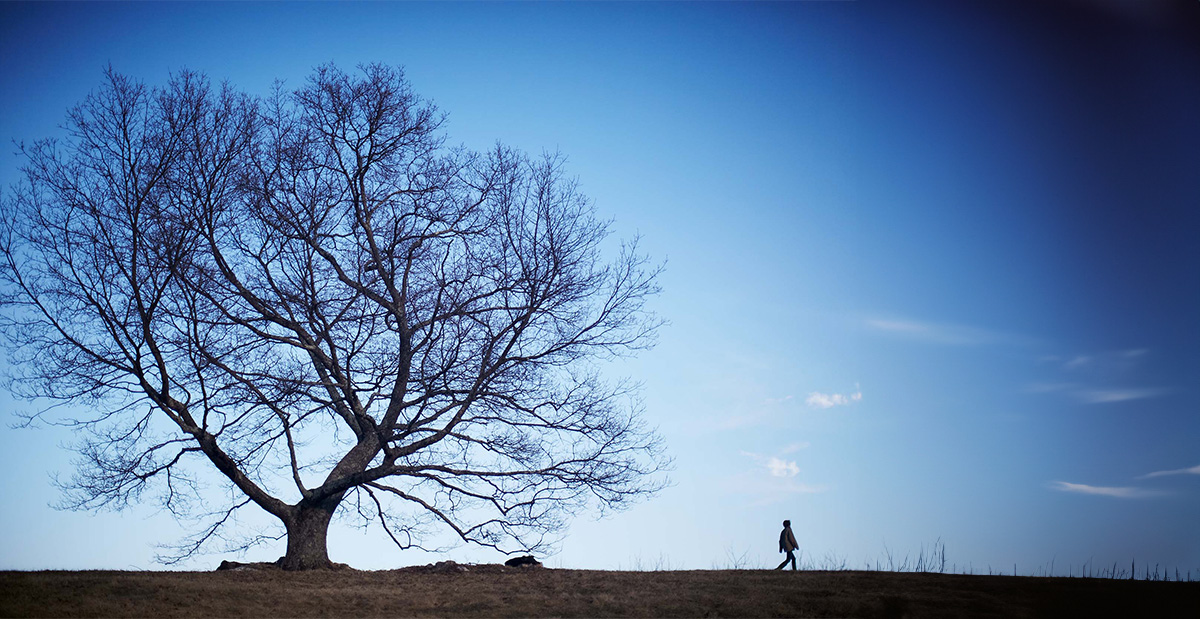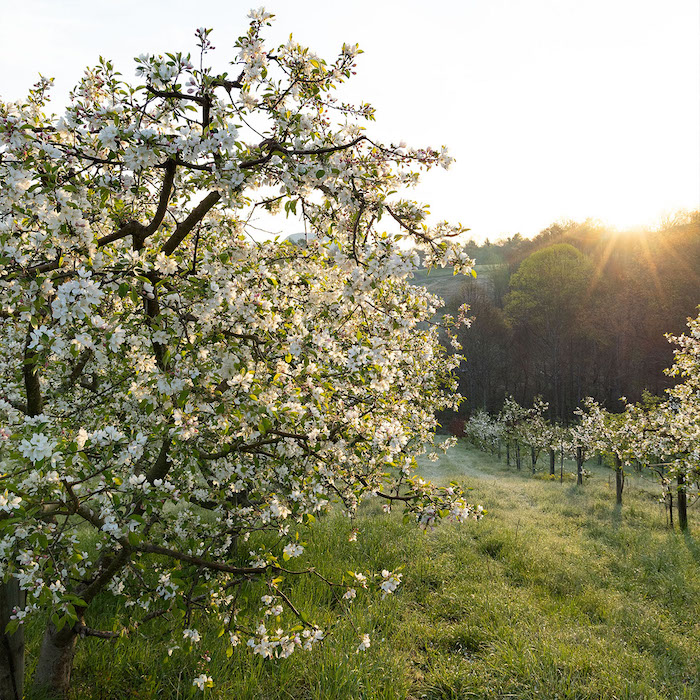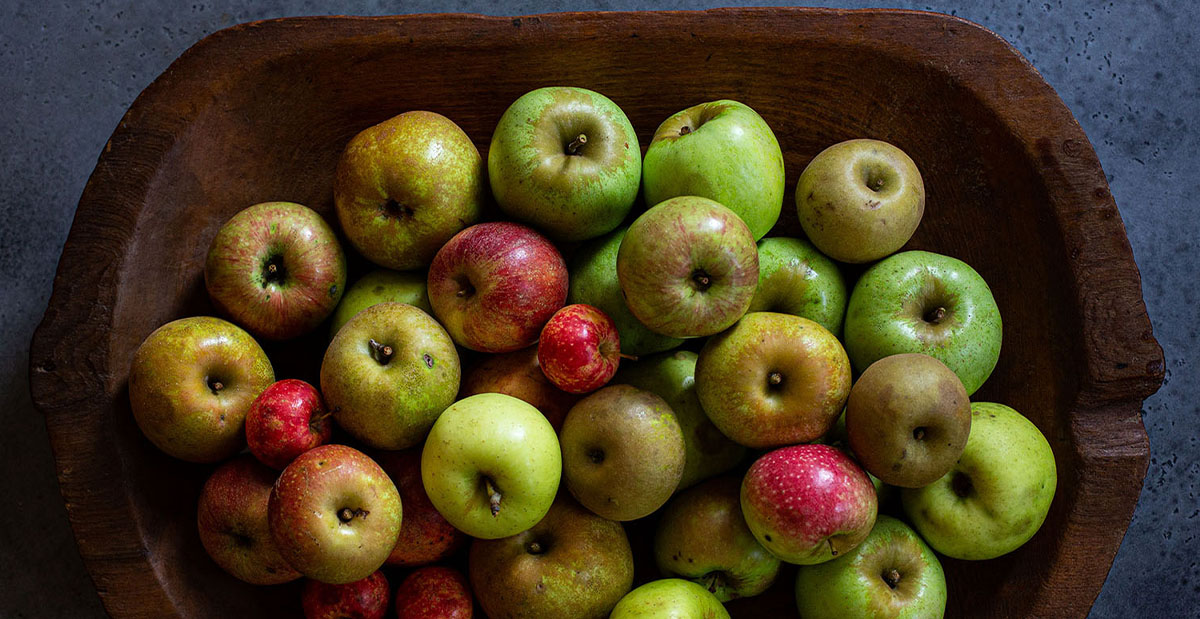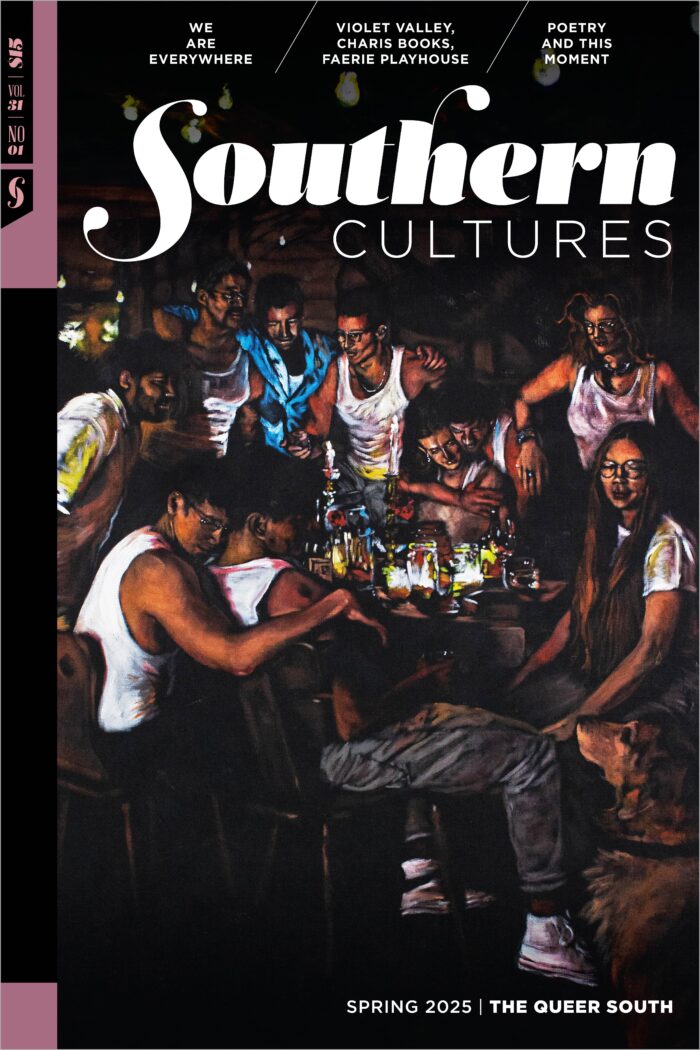Before cider, there were apples, and the story of how domestic apples came to the South includes unexpected characters and circuitous routes.
Flowering plants, called angiosperms, originated in the fossil record at least 120 million years ago, and possibly as early as 170 million years ago. Around 100 million years ago, plants appeared that are today classified in the Rosaceae family, the family that includes the genus Malus, or apples. Around 10 million years ago, changing climate in Central Asia isolated the Tian Shan mountains and trapped an early form of apples on a fertile mountain range that was never glaciated. The precursor to today’s southern apples evolved on this mountain island to attract large animals, creatures like bears, that could disperse seeds widely. And in doing so, apples became bigger and sweeter.
Fast forward to the Silk Road, which began not with silk but as a migratory grazing path for wild horses, donkeys, and camels around 13,000 years ago. When humans domesticated horses around 7,000 years ago, communities began trading along this migratory path through the Tian Shan mountains. Unlike camels, whose teeth and digestive tract destroy apple seeds, horses dispersed without damaging the seeds. Apples began to roam.
From their original home in Central Asia, apples traveled through the Persian Empire into Greece, Rome, and Europe. Though a few native apple species existed in Europe, Romans reproduced the sweeter apples that originated in Asia and even perfected grafting techniques. Romans brought their complete package of apple skills—cultivation, grafting, storing, and likely cidermaking—to northwest Europe and Britain. And from England, the now solidly domesticated apple we today call Malus domestica sailed to Virginia.

But Virginia was not the apple’s first landing spot in America.
Scandinavian fishermen left Malus domestica seeds on islands off the Maine coast as early as 1550. Spanish missionaries and explorers brought citrus and peach seeds to Florida and likely also dispersed apple seeds in the lower South. Orchards surrounded the Spanish fort established in Memphis, Tennessee. Traveling the South in 1702, the naturalist William Bartram found old orchards planted by the French in Alabama. By 1615, orchards grew in Jamestown, Virginia, 300 miles east of our farm, the cultivated apple’s first significant toehold in the South.
There, many apples ended up in the cider mill, and the apple pomace, the leftover ground flesh, contained apple seeds. Each seed promised a brand-new tree.
Seedling trees, like the seedlings that sprouted in the Foggy Ridge parking lot, were the norm for early southern orchards. Colonists, enslaved men and women, and Indigenous people planted apple seeds—thousands and thousands of seeds. Once these seeds hit the ground, they germinated and grew more vigorously than in their British homes. Apple genetic diversity became greater in America than in Europe due to “spectacular germination.”
Early southerners planted seeds and created seedling orchards, some as large as 10,000 trees. But animals spread apples even more widely. Farm animals roamed largely unfenced. Robert Beverley wrote that on early Virginia farms, “hogs swarm like Vermine upon the Earth.” Apple seeds passed through the digestive tracts of hogs, horses, and deer without damage, and their sharp hooves drove seeds into the soil. Free-range livestock did their part in spreading apple diversity in the South.
In these early southern orchards, every apple seed created a new apple, but few seedling apples tasted sweet. In a search for sweetness and utility, humans began to impose their desires on this wild fruit. People began to select and replicate the apples they most valued through grafting or pulling up root suckers. Plantation owners grew nursery stock of carefully selected and grafted apples for their own use. The skilled labor of grafting and tending large orchards was performed by indentured servants and later by enslaved men and women. Small farm owners swapped grafting wood from their favorite trees. By the mid-eighteenth century, commercial nurseries sold named southern apple varieties in Charleston, South Carolina, and across Virginia.

Today people purchase apples with glossy names like Cosmic Crisp every month of the year. North Carolina Keeper, Sour June, Camack’s Sweet, July Delicious . . . these southern apples reveal qualities people valued. They give us a glimpse into the lives of those who replicated them.
Wherever apples migrated, humans welcomed this fruit into all aspects of their lives. Unlike most mammals, humans are unable to generate vitamin C and must gain this important building block from food sources. Apples, even when dried, are an excellent source of vitamin C. Apples preserved on strings were discovered in the Tomb of Puabi, a 4,500-year-old royal burial site at Ur, near modern Iraq. They are one of the most easily consumed foods—they can be eaten fresh, and many improve with age. Trading ships carried long-storing apples to prevent scurvy. Beyond nourishment, apples also seep into human conscious- ness, our language, and our culture.
When apples arrive in a culture, they enter in full force. In The Extraordinary Story of the Apple, Barrie Juniper and David Mabberley write, “Into every country in which it was brought and unlike almost every other food source . . . the apple almost immediately entered the realms of the names of villages and private residences, and later, surnames, such as the topographic ‘Appleyard,’ given to someone associated with orchards.” Apples turn up in literature, song, and art. And as they are tamed, they acquire names.3
Southern apple names trick us with gauzy back stories, like the Mattamuskeet apple from coastal North Carolina said to have been found in the gullet of a wild goose by members of the Mattamuskeet tribe. We know that Caleb Ralls grew the Ralls Janet apple in Amherst County, Virginia, in the 1790s. It obtained anaristocratic veneer with the oft-repeated and highly unlikely story of a Frenchman named M. Genet delivering this apple from France to Secretary of State Thomas Jefferson.

More tantalizing for me are the partial stories, the left-out narratives. North Carolinians in Rowan, Stanley, and Cabarrus Counties grew the Toby apple and thought it “unsurpassed” for applesauce, apple butter, and drying. This apple carries parallel and opaque narratives: Is Toby named for a wounded Confederate soldier who planted a seed from an apple he ate on the way home from Gettysburg? Or did an enslaved man named Toby replicate a seedling tree that he believed bore valuable fruit? Who chose and grafted this tree, what it meant to the families who grew it . . . this apple story is deeply mythologized in a way that obscures history.
Though my immigration to a southern Appalachian farm was the result of a serendipitous conversation with afriend, I intended to sink roots in my loamy clay soil as deeply as a tree. Even if my neighbors would forever consider me not from here, I was as determined as an apple tree to plant my dreams deep.
For my long-held dream of an agriculture venture, I wanted to create something that would outlive me.
A multiple-time James Beard Award finalist for Outstanding Wine, Spirits, or Beer Professional, Diane Flynt founded Foggy Ridge Cider in 1997 after leaving her corporate career and produced cider until 2018. She now sells cider apples from the Foggy Ridge orchards in the Virginia Blue Ridge Mountains.From WILD, TAMED, LOST, REVIVED: The Surprising Story of Apples in the South by Diane Flynt. Copyright © 2023 by Diane Flynt. Used by permission of the University of North Carolina Press. www.uncpress.orgNOTES
- Crosby, Ecological Imperialism, 188,
- Wilson and Carril, Bees in Your Backyard, 163.
- Juniper and Mabberley, Extraordinary Story of the Apple, 105.

